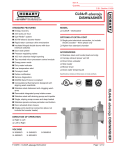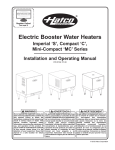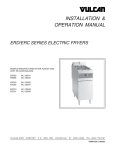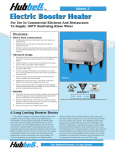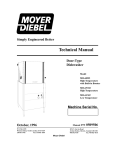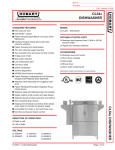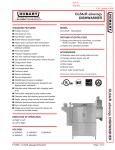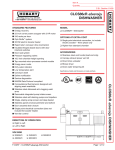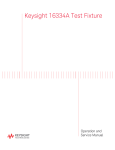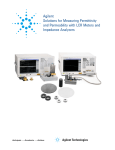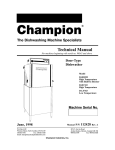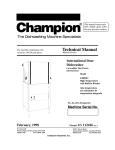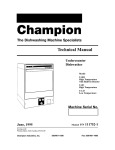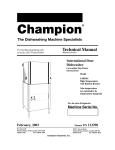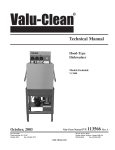Download Hobart C44A ML-104047 User's Manual
Transcript
C-LINE A & AW DISHWASHERS MODEL R-L OPERATION L-R OPERATION ML-38898 ML-104047 ML-103946 ML-104082 ML-104199 ML-103908 ML-110042 ML-38899 ML-104050 ML-103947 ML-104083 ML-104198 ML-103909 ML-110041 CRS76A CRS86A CRS110A ML-38947 ML-104052 ML-103958 ML-104086 ML-104202 ML-103910 ML-110044 ML-38948 ML-104055 ML-103959 ML-104087 ML-104201 ML-103911 ML-110043 CCS66A CCS66AW CCS76A CCS86A CCS110A ML-104321 ML-104323 ML-104325 ML-104327 ML-110046 ML-104320 ML-104322 ML-104324 ML-104326 ML-110045 CPW80A ML-38955 ML-104058 ML-103964 ML-104090 ML-104205 ML-103912 ML-110048 ML-38956 ML-104061 ML-103967 ML-104091 ML-104204 ML-103913 ML-110047 C44A C44AW C54A C64A C88A CRS66A CRS66AW CPW80AW CPW90A CPW100A CPW124A 701 S. RIDGE AVENUE TROY, OHIO 45374-0001 937 332-3000 www.hobartcorp.com FORM 17791 Rev. O (Feb. 2006) IMPORTANT FOR YOUR SAFETY THIS MANUAL HAS BEEN PREPARED FOR PERSONNEL QUALIFIED TO INSTALL GAS EQUIPMENT, WHO SHOULD PERFORM THE INITIAL FIELD START-UP AND ADJUSTMENTS OF THE EQUIPMENT COVERED BY THIS MANUAL. POST IN A PROMINENT LOCATION THE INSTRUCTIONS TO BE FOLLOWED IN THE EVENT THE SMELL OF GAS IS DETECTED. THIS INFORMATION CAN BE OBTAINED FROM THE LOCAL GAS SUPPLIER. IMPORTANT IN THE EVENT A GAS ODOR IS DETECTED, SHUT DOWN UNITS AT MAIN SHUTOFF VALVE AND CONTACT THE LOCAL GAS COMPANY OR GAS SUPPLIER FOR SERVICE. FOR YOUR SAFETY DO NOT STORE OR USE GASOLINE OR OTHER FLAMMABLE VAPORS OR LIQUIDS IN THE VICINITY OF THIS OR ANY OTHER APPLIANCE. FOR YOUR SAFETY READ BEFORE OPERATING DO NOT USE THIS APPLIANCE IF ANY PART HAS BEEN UNDER WATER. IMMEDIATELY CALL A QUALIFIED SERVICE TECHNICIAN TO INSPECT THE APPLIANCE AND TO REPLACE ANY PART OF THE CONTROL SYSTEM AND ANY GAS CONTROL WHICH HAS BEEN UNDER WATER. IN THE EVENT OF A POWER FAILURE, DO NOT ATTEMPT TO OPERATE THIS DEVICE. –2– TABLE OF CONTENTS GENERAL . . . . . . . . . . . . . . . . . . . . . . . . . . . . . . . . . . . . . . . . . . . . . . . . . . . . . . . . . . . . . . . . . . . 4 Standard Equipment . . . . . . . . . . . . . . . . . . . . . . . . . . . . . . . . . . . . . . . . . . . . . . . . . . . . . . . 5 Optional Equipment . . . . . . . . . . . . . . . . . . . . . . . . . . . . . . . . . . . . . . . . . . . . . . . . . . . . . . . . 7 INSTALLATION . . . . . . . . . . . . . . . . . . . . . . . . . . . . . . . . . . . . . . . . . . . . . . . . . . . . . . . . . . . . . . 8 Unpacking . . . . . . . . . . . . . . . . . . . . . . . . . . . . . . . . . . . . . . . . . . . . . . . . . . . . . . . . . . . . . . . . 8 Installation Codes. . . . . . . . . . . . . . . . . . . . . . . . . . . . . . . . . . . . . . . . . . . . . . . . . . . . . . . . . . 8 Assembly . . . . . . . . . . . . . . . . . . . . . . . . . . . . . . . . . . . . . . . . . . . . . . . . . . . . . . . . . . . . . . . . 9 Water Requirements . . . . . . . . . . . . . . . . . . . . . . . . . . . . . . . . . . . . . . . . . . . . . . . . . . . . . . 10 Plumbing Connections . . . . . . . . . . . . . . . . . . . . . . . . . . . . . . . . . . . . . . . . . . . . . . . . . . . . . 11 Drain Connection(s) . . . . . . . . . . . . . . . . . . . . . . . . . . . . . . . . . . . . . . . . . . . . . . . . . . . . . . . 11 Fill & Final Rinse Connection . . . . . . . . . . . . . . . . . . . . . . . . . . . . . . . . . . . . . . . . . . . . . . . 11 Steam Connection (When Equipped) . . . . . . . . . . . . . . . . . . . . . . . . . . . . . . . . . . . . . . . . . 11 Gas Connection (When Equipped) . . . . . . . . . . . . . . . . . . . . . . . . . . . . . . . . . . . . . . . . . . . 12 Venting Requirements . . . . . . . . . . . . . . . . . . . . . . . . . . . . . . . . . . . . . . . . . . . . . . . . . . . . . 13 Pant-Leg Vent Connections . . . . . . . . . . . . . . . . . . . . . . . . . . . . . . . . . . . . . . . . . . . . . . . . . 14 Rate of Exhaust Flow Calculations . . . . . . . . . . . . . . . . . . . . . . . . . . . . . . . . . . . . . . . . . . . 16 Electrical Connections – Dishwasher . . . . . . . . . . . . . . . . . . . . . . . . . . . . . . . . . . . . . . . . . 17 Electrical Connections – Optional Equipment . . . . . . . . . . . . . . . . . . . . . . . . . . . . . . . . . . 18 Optional Equipment Control Connections . . . . . . . . . . . . . . . . . . . . . . . . . . . . . . . . . . . . . 18 Curtain Installation . . . . . . . . . . . . . . . . . . . . . . . . . . . . . . . . . . . . . . . . . . . . . . . . . . . . . . . . 19 OPERATION . . . . . . . . . . . . . . . . . . . . . . . . . . . . . . . . . . . . . . . . . . . . . . . . . . . . . . . . . . . . . . . 20 Preparation . . . . . . . . . . . . . . . . . . . . . . . . . . . . . . . . . . . . . . . . . . . . . . . . . . . . . . . . . . . . . . 20 Filling the Dishwasher . . . . . . . . . . . . . . . . . . . . . . . . . . . . . . . . . . . . . . . . . . . . . . . . . . . . . 20 Starting the Gas Heat Dishwasher . . . . . . . . . . . . . . . . . . . . . . . . . . . . . . . . . . . . . . . . . . . 21 Dishwashing . . . . . . . . . . . . . . . . . . . . . . . . . . . . . . . . . . . . . . . . . . . . . . . . . . . . . . . . . . . . . 22 CLEANING . . . . . . . . . . . . . . . . . . . . . . . . . . . . . . . . . . . . . . . . . . . . . . . . . . . . . . . . . . . . . . . . . 23 DOs and DON'Ts for Your New Hobart Warewasher . . . . . . . . . . . . . . . . . . . . . . . . . . . . 24 MAINTENANCE . . . . . . . . . . . . . . . . . . . . . . . . . . . . . . . . . . . . . . . . . . . . . . . . . . . . . . . . . . . . . 25 Vent . . . . . . . . . . . . . . . . . . . . . . . . . . . . . . . . . . . . . . . . . . . . . . . . . . . . . . . . . . . . . . . . . . . . 25 Lubrication . . . . . . . . . . . . . . . . . . . . . . . . . . . . . . . . . . . . . . . . . . . . . . . . . . . . . . . . . . . . . . 25 Service . . . . . . . . . . . . . . . . . . . . . . . . . . . . . . . . . . . . . . . . . . . . . . . . . . . . . . . . . . . . . . . . . 25 TROUBLESHOOTING . . . . . . . . . . . . . . . . . . . . . . . . . . . . . . . . . . . . . . . . . . . . . . . . . . . . . . . . 26 –3– Installation, Operation and Care Of C-LINE A & AW DISHWASHERS SAVE THESE INSTRUCTIONS GENERAL C-Line A or AW Dishwashers are fully automatic, rack-type washers that convey the rack from one end of the machine to the other, exposing the ware to progressive wash/rinse action. It has a stainless steel tank and chamber with a welded stainless steel angle frame, stainless steel legs and stainless steel adjustable feet. Front inspection door(s) provide access to the interior of the wash/rinse chambers. CRS and CPW models also have a prewash inspection door. The C44A/AW, CRS66A/AW, CCS66A/AW, CPW80A/AW, C54A, CRS76A, CCS76A, CPW90A, C64A, CRS86A, CCS86A and CPW100A machines are capable of either high- or low-temperature operation. The C88A family is not available for low-temperature operation. Machines are available with steam, gas or electric heat. A Prewash Unit or Recirculating Scrapper are also available. Model C44A Right to Left Operation –4– STANDARD EQUIPMENT Controls (Fig. 1) Fig. 1 The controls are mounted on top of the chamber. There are three operational control switches housed in the control box: Power (ON-OFF); Motor (ON-OFF); and Timer (MANUAL-AUTO). A pilot circuit transformer provides a reduced voltage of 115 volts for the machine controls. When equipped for gas heat, a step-down transformer provides a reduced voltage of 24 volts for the igniter board(s) and valves. Motor and Pump Units The wash/rinse pump(s) are centrifugal-type cast stainless steel with a stainless steel impeller. The 2 HP motor is available in the following voltages: Volts 208-240 208-240 200-240 Hz 60 60 50 Phase 1 3 3 Volts 380-415 380 480 600 Hz 50 60 60 60 Phase 3 3 3 3 The conveyor drive motor is a 1/6 HP gear motor with the same voltage as the wash/rinse pump motor. A 1 HP prewash pump motor is standard on CRS and CCS models. A 2 HP prewash pump motor is standard on CPW models. Voltage and construction are the same as the wash/rinse pump motor. All motors have built-in thermal overload protection with manual reset. Vacuum Breakers The final rinse and fill lines contain an atmospheric vacuum breaker that prevents any reverse flow of water from the dishwasher into the potable water supply. Heater Protection A float-activated switch located in the wash tank (and rinse tank if included) automatically turns off the heat supply, if the water level is too low. Once the water returns to the proper level, the heating circuit becomes operational if heat is demanded. An overtemperature protector is also provided for electric and gas tank heat, and for built-in booster if provided. If overheating should occur, the heat supply will be turned off. Turn the Power switch OFF and contact your local Hobart service office. –5– Thermometers Dial thermometers for wash and final rinse are indicated in °F and °C on the faceplate. Door Interlocks Door interlock switches will prevent machine operation while an inspection door is open. If a door is opened while the machine is operating, the pumps and conveyor will automatically turn off. After the door is closed, the machine must be restarted by pushing the Motor switch ON. Wash and Rinse Arms Upper and lower prewash, wash and final rinse arms are removable. RS Unit and CS Unit – (CRS66A, CRS66AW, CRS76A, CRS86A, CRS110A, CCS66A, CCS66AW, CCS76A, CCS86A and CCS110A) The 22" Recirculating Scrapper is a power prewash unit which uses overflow wash water, hence, no fill valve is required. PW Unit – (CPW80A, CPW80AW, CPW90A, CPW100A and CPW124A) The 36" prewash unit is a large power prewash unit which uses overflow wash water, hence, no fill valve is required. Auto Fill Close door(s) and push the Power switch ON. After a 5-second delay, the machine fills automatically. Auto Timer The Auto Timer switch is located on the left side of the control box. Designed to save electrical power, it is adjusted to shut off pump and drive motors a set amount of time after the last rack exits the dishwasher. To restart, slide a rack into the machine or push the Motor switch ON. To change the time setting, contact your local Hobart-authorized service office. Common Drain A stainless steel common drain tube connects the dishwasher and prewash drains together, thus requiring only one drain connection at installation. Front Panel Stainless steel front panel conceals pumps and plumbing. Common Water Connection A single water connection for fill and final rinse is standard. This requires a minimum incoming water temperature of 180°F for high-temperature machines (140°F for low-temperature machines) for machines not equipped with booster heater. A minimum incoming water temperature of 110°F is required for machines equipped with an optional 30 KW Hobart booster heater, and a minimum incoming water temperature of 140°F is required for machines equipped with an optional 15 KW Hobart booster heater. –6– OPTIONAL EQUIPMENT Blower Dryer — Dishes are dried by forced, heated air (3-phase machines only). The exhaust requirement at the vent stack of the blower dryer is 1400 CFM. Conveyor Dwell — The optional conveyor dwell switch (Conveyor ON-OFF) is housed in the control box and shuts the conveyor drive motor off. Condenser — Removes excess moisture from exhaust air before returning air to dishroom (only on machines without booster). Single-Point Electrical Connection — Option for electric heat machines. Requires one electrical service connection for non-booster machines. Available for 3-phase machines only. Extended Hood — Provides a dampered vent and acts as an effective splash shield for the discharge end of the wash chamber. The exhaust requirement at the entrance end is 200 CFM maximum; at the discharge end, the exhaust requirement is 400 CFM maximum. Side Loader — Allows machine to be placed in a corner or used where area at the load end is limited. Available without hood. Vent Hood — (Sides are not as long as the extended hood.) A dampered exhaust opening controls steam and water splash to work area. The exhaust requirement at the entrance end is 200 CFM maximum; at the discharge end, the exhaust requirement is 400 CFM maximum. Table Limit Switch — Shuts the machine off when the unload table is full of racks. CS/RS-22 Lower Prewash Arm — Optional on the CRS and CCS models. DDU38 Unloader — Moves racks in a 90-degree arc from the unload end of the dishwasher to a dish table; this allows the machine to be placed in a corner or to be used where area at the unload end is limited. Separate Water Connection — Individual Fill (140°F) and Final Rinse (180°F min.) water connections are available on high-temperature, non-booster machines only. Booster Heater — Interwired and interplumbed 30 KW or 15 KW booster heater. –7– INSTALLATION UNPACKING Immediately after unpacking the dishwasher, check it for possible shipping damage. If the machine is found to be damaged, save the packaging material and contact the carrier within 15 days of delivery. Prior to installation, verify that the electrical service agrees with the specifications on the machine data plate, which is located on the right-hand side of the control box for non-booster machines and on the left-hand side of the control box for booster equipped machines. The electrical diagram is located on the inner surface of the control box cover. After unpacking the dishwasher, remove the items shipped uninstalled (overflow tube, literature envelope, splash shields, curtains and chamber hole plug kit) and instructions from inside the dishwasher. Set the dishwasher in its proper location. Adjust the height and level by turning the adjustable feet. NOTE: The dishwasher must be positioned and leveled before making plumbing connections. NOTE: This machine must be operated with an automatic detergent feeder and, if applicable, an automatic chemical sanitizer feeder, including a visual means to verify that detergents and sanitizers are delivered or a visual or audible alarm to signal if detergents and sanitizers are not available for delivery to the respective washing and sanitizing systems. See instructions for electrical and plumbing connections located in this manual and in the feeder equipment manual. Chemical feeders are supplied by others. INSTALLATION CODES Installation must be in accordance with state and local codes, or in the absence of local codes, with the National Fuel Gas Code, ANSIZ223.1 (latest edition), if applicable, and the National Electrical Code ANSI/NFPA 70 (latest edition). In Canada, the installation standards are: CAN/CGA B149.1, CAN/CGA B149.2 and CSA C22.2 No. 1 (latest editions). –8– ASSEMBLY Dish tables should be fitted into the dishwasher (Fig. 2). Use mastic between table and lip of tank to prevent leakage. Rack track height should be from 1/4 to 5/16" (Fig. 2) above the tank lip. Dish tables should be sloped so that any water carried from the dishwasher will drain back into it. Fig. 2 Remove the strainer basket and strainer pans from the wash chamber (Fig. 3). Place the overflow tube in the retainer (Fig. 4). Fig. 3 Fig. 4 –9– WATER REQUIREMENTS Proper water quality can improve ware washing performance by reducing spotting, lowering chemical supply costs, enhancing effectiveness of labor and extending equipment life. Local water conditions vary from one location to another. The recommended proper water treatment for effective and efficient use of this equipment will also vary depending on the local water conditions. Ask your municipal water supplier for details about local water specifics prior to installation. Recommended water hardness is 4 to 6 grains of hardness per gallon. Chlorides must not exceed 50 parts per million. Water hardness above 6 grains per gallon should be treated by a water conditioner (water softener or in-line treatment). Water hardness below 4 grains per gallon also requires water treatment to reduce potential corrosion. Water treatment has been shown to reduce costs associated with machine cleaning, reduce deliming of the dishwasher, reduce detergent usage and reduce corrosion of metallic surfaces in the booster water heater and dishwasher. Sediment, silica, chlorides or other dissolved solids may lead to a recommendation for particulate filtration or reverse osmosis treatment. If an inspection of the dishwasher or booster heater reveals lime buildup after the equipment has been in service, in-line water treatment should be considered and, if recommended, should be installed and used as directed. Contact your Hobart Service office for specific recommendations. PLUMBING CONNECTIONS WARNING: PLUMBING CONNECTIONS MUST COMPLY WITH APPLICABLE SANITARY, SAFETY AND PLUMBING CODES. The plumber who connects this machine is responsible for making certain that both water and steam lines are THOROUGHLY FLUSHED OUT BEFORE connecting to any manual valve or solenoid valve. This ‘‘flush-out’’ is necessary to remove all foreign matter, such as chips (resulting from cutting or threading of pipes), pipe joint compound from the lines or, if soldered fittings are used, bits of solder or cuttings from the tubing. Debris, if not removed, may lodge in the valves and render them inoperative. Manual valves or solenoid valves fouled by foreign matter, and any expenses resulting from this fouling, are NOT the responsibility of the manufacturer. DRAIN CONNECTION Connect the drain through a trap to the sewer using 2" pipe. The common drain for the tank(s) requires only one connection to the floor drain. If a grease trap is required by code, it should have a minimum flow capacity of 31 gallons per minute. – 10 – FILL & FINAL RINSE CONNECTION (Fig. 5) Fig. 5 Use 3/4" pipe for the connecting line. A flowing pressure of 15 to 25 psig and a minimum temperature of 180°F must be maintained at the machine for common water connection for a non-booster heat machine; 110°F minimum temperature incoming water is required for machines equipped with an optional 30 KW booster heater; and 140°F minimum temperature incoming water is required for machines equipped with an optional 15 KW booster heater. For long runs, use larger pipe and insulation to ensure adequate pressure and temperature. If flow pressure exceeds 25 psig, a pressure-reducing valve (not furnished) must be installed in the supply line. CAUTION: The water pressure regulator must have a relief bypass. Failure to use the proper type of pressure regulator may result in damage to the unit. A pressure gauge is provided for verification of proper water pressure. STEAM CONNECTION (WHEN EQUIPPED) CAUTION: Steam supply pressure must agree with steam trap selection. The steam trap (supplied) will be for either 0 to 20 psig (flowing) or 21 to 50 psig (flowing). The steam supply must be between 10 and 50 psig flowing pressure. If flowing pressure exceeds 50 psig, a pressure regulator (not supplied) must be installed in the supply line. If flowing pressure is 10 psig, use 1" piping; if over 10 psig, use 3/4" piping. Steam flow is controlled by solenoid valves. If machine is equipped with steam injector(s), one supply connection is required. For single-tank steam coil installations, two connections are required, one for supply and one for return. For two-tank steam coil installations, one common supply connection and two return connections (one per tank) are required. – 11 – GAS CONNECTION (WHEN EQUIPPED) Check the gas data plate attached to the dishwasher or tag attached to the gas burner tubing for type of gas to be used. The burner is not adjustable. If flowing gas pressure is above 7" W.C. (natural gas) or 11" W.C. (propane gas), an additional regulator valve (not supplied) must be installed in the supply line. Static incoming line pressure should not exceed 14.0" W.C. for either propane or natural gas. IMPORTANT: Make sure the installation meets the local code for your area. GAS SPECIFICATIONS Models C44A & C54A Families Type of Gas BTU/Hr Incoming Line Size Flowing Gas Pressure - Not Static Inches W.C. (Water Column) Incoming Line Pressure Minimum Maximum Manifold Pressure Natural 78,000 1/2" NPT 3.5" W.C. 7" W.C. 3.2" W.C. Propane 78,000 1/2" NPT 9.0" W.C. 11" W.C. 8.2 W.C. Natural 94,000 3/4" NPT 3.5" W.C. 7" W.C. 3.2 W.C. Propane 94,000 3/4" NPT 9.0" W.C. 11" W.C. 8.4" W.C. Natural 156,000 3/4" NPT 3.5" W.C. 7" W.C. 3.2" W.C. Propane 156,000 3/4" NPT 9.0" W.C. 11" W.C. 8.2 W.C. C64A Family C88A Family NOTE: DO NOT use Teflon tape on gas line pipe threads. For gas line pipe connections, use Loctite 565, Hobart part number 546292, or a flexible sealant suitable for use with Natural and Propane Gases. The appliance and its gas connections must be leak tested before placing the appliance in operation. Use soapy water for leak test. DO NOT use open flame. The installation must conform with local codes, or in the absence of local codes, with the National Fuel Gas Code, ANSI Z223.1 (latest edition). Copies may be obtained from the American Gas Association, Inc., 1515 Wilson Blvd., Arlington, VA 22209. The appliance and its individual shutoff valve must be disconnected from the gas supply piping system during any pressure testing of that system at test pressures in excess of 1/2 psig (3.45 kPa). The appliance must be isolated from the gas supply piping system by closing its individual manual shutoff valve during any pressure testing of the gas supply piping system at test pressures equal to or less than 1/2 psig (3.45 kPa). Dissipate test pressure from the gas supply line before reconnecting the appliance and its manual shutoff valve to the gas supply line. CAUTION: Failure to follow this procedure may damage the gas valve. IMPORTANT: Gas heat machines must be provided with a means to exhaust the flue gases to the exterior of the building. Refer to Venting Requirements, pages 13 – 16. The dishwasher must be installed so that the flow of combustion and ventilation air will not be obstructed. Adequate clearances for air openings into the combustion chamber must be provided. Make sure there is an adequate supply of make-up air in the room to allow for combustion of the gas at the burner(s). Keep the appliance area free and clear from all combustible substances. Do not obstruct the flow of combustion and ventilation air. The dishwasher must have a minimum clearance from combustible construction of 3" at the rear and 0" at the sides. A clearance of 40" must be provided at the front and 20" at each end of the dishwasher for servicing and proper operation. The burner is ignited automatically by solid-state electronic circuitry; there is no pilot light. Gas flow is regulated by the temperature control circuit. – 12 – VENTING REQUIREMENTS Type II Canopy Hood Most commercial dishwashers must be provided with external venting per local codes. The exception is electric or steam heat machines operating in the chemical or low temperature sanitizing mode where the existing room ventilation will compensate for the vapors produced. The local authority has final jurisdiction over this matter. Venting can be provided by either the pant-leg duct connections (Fig. 8) or by a vent hood over the whole machine (Fig. 6). The Hobart C-Line dishwasher equipped for gas tank heat is not provided with a flue collar and is not intended to have the flue directly connected to a ventilation system. However, the products of combustion must be vented to the outside air. A vent hood over the entire dishwasher (Fig. 6) can be employed to vent both the moist air from the dishwashing chamber and the flue gases from the gas heater. The volume of flue exhaust required for venting moist air and flue gases using a single vent hood over the entire dishwasher must be calculated using the formula in the Perimeter Calculation Formula on page 16. Type I or Type II canopy hoods are recommended. A factory-built commercial exhaust hood may be listed as conforming to Underwriters Laboratory's standard 710 titled, Exhaust Hoods for Commercial Cooking Equipment. Hoods must be installed according to the manufacturer's instructions. Makeup air must be provided so that the exhaust flow rate results in a positive building pressure in the room where the unit is located (more outside air than exhaust air). Factory-built hoods not tested to UL standard 710 and custom built hoods must comply with the following specifications: Stainless steel 0.037" [No. 20 Gage] minimum thickness or copper sheet weighing at least 24 ounces per square foot; the hood must be secured in place by noncombustible supports and must meet the RATE OF EXHAUST FLOW CALCULATIONS. TYPE II CANOPY HOOD Fig. 6 – 13 – PANT-LEG VENT CONNECTIONS (Figs. 7, 8) IMPORTANT: Gas heat machines must be provided with a means to exhaust the flue gases to the exterior of the building. Pant-Leg duct connectors (Fig. 7) alone DO NOT provide ventilation for the gas flue at the rear of the machine. A mini vent hood (Fig. 8) must be used or a canopy type hood may be used. Moist air escapes from each end of the conveyor type dishwasher. The exhaust requirements recommended are a maximum of 200 CFM at the entrance end of the dishwasher and a maximum of 400 CFM at the discharge end. Optional vent hoods or extended hoods may be provided at each end of the machine. Sufficient make-up air must be provided so the exhaust flow results in a positive building pressure in the room in which the unit is located (more outside air than exhaust air). Hoods are provided with 4" x 16" vent connectors with vent dampers which allow adjustment during installation. Typical construction is for 'Pant-Leg' hood connections to the 4" x 16" vent connectors (Fig. 5). Vent stacks must be watertight and fit inside the vent connector openings. Fig. 7 – 14 – If using the 'Pant-Leg' duct, a mini vent hood (Fig. 8), positioned about 18" above the flue exit at the rear of the dishwasher and connected to existing duct work, must be used for the flue gases. The volume of flue exhaust in the mini vent hood should not exceed 200 CFM. Fig. 8 In either case, if a powered means of exhaust is used, an electrical interlock must be provided to allow the flow of gas to the dishwasher burner only when the exhaust system is in operation. For additional information, refer to the National Fuel Gas Code, ANSI Z223.1, NFPA 54. In all cases, local codes will prevail. – 15 – RATE OF EXHAUST FLOW CALCULATIONS Based on the 2004 International Mechanical Code (IMC). The Rate of air flow required for a vent hood is now based on the linear length of the face of the hood instead of the area of the hood opening. The length of the hood is measured along the front side that is parallel with the front line of the appliance (LENGTH, Fig. 9). For hood designs not covered by these calculations consult the latest edition of the IMC or other local codes. Type of Hood CFM per Linear Feet of Hood Wall Mounted Canopy 200 CFM Single Island Canopy 400 CFM Subtract make-up air flow supplied directly to a hood cavity from the total exhaust flow rate of the hood, if applicable. Fig. 9 – 16 – ELECTRICAL CONNECTIONS — DISHWASHER WARNING: ELECTRICAL AND GROUNDING CONNECTIONS MUST COMPLY WITH THE APPLICABLE PORTIONS OF THE NATIONAL ELECTRICAL CODE ANSI / NFPA 70 (LATEST EDITION) AND/OR OTHER LOCAL ELECTRICAL CODES. WARNING: DISCONNECT THE ELECTRICAL POWER TO THE MACHINE AND FOLLOW LOCKOUT / TAGOUT PROCEDURES. THERE MAY BE MULTIPLE CIRCUITS. BE SURE ALL CIRCUITS ARE DISCONNECTED. Some machines may have more than one electrical power supply. All supplies MUST be disconnected. Motor(s) Connect a permanent electrical power supply to the terminal block in the control box. Three-phase motor(s) must rotate the impeller in the direction of the arrow found on the pump housing of the motor pump unit (Fig. 10), the drive motor can rotate in either direction. Before placing the machine into service, a check must be made to verify correct rotation. Only one motor needs to be checked, as the machine is wired at the time of manufacture so that all motors will rotate the same direction. Fig. 10 If the impeller does not rotate in the direction of the arrow, DISCONNECT POWER SUPPLY(IES) to the machine and interchange any two power supply leads at the control box terminal block. On machines with a circuit breaker box, reverse any two leads at the incoming power supply block in the circuit breaker box (three-phase only). Start the machine momentarily and verify proper direction of rotation. Electric Heat Connect a permanent electrical power supply to the line terminals of the control box. The tank water temperature is regulated by a solid-state thermostat which is preset at the factory and should not require adjustment. If an adjustment is necessary or the machine is to operate low temperature, contact your local Hobart service office. Use the machine thermometers for verification of proper water temperatures. – 17 – ELECTRICAL CONNECTIONS — OPTIONAL EQUIPMENT WARNING: ELECTRICAL AND GROUNDING CONNECTIONS MUST COMPLY WITH THE APPLICABLE PORTIONS OF THE NATIONAL ELECTRICAL CODE AND/OR OTHER LOCAL ELECTRICAL CODES. WARNING: DISCONNECT THE ELECTRICAL POWER TO THE MACHINE AND FOLLOW LOCKOUT / TAGOUT PROCEDURES. OPTIONAL EQUIPMENT CONTROL CONNECTIONS Detergent Dispenser Maximum rating for detergent dispenser connected to DPS1 and DPS2 is 1.5 Amps at line voltage. Rinse Aid Dispenser Maximum rating for rinse aid dispenser connected to RPS1 and RPS2 is 1.5 Amps at line voltage. Vent Fan Control Maximum rating for vent fan control connected to VFC1 and VFC2 is 1.5 Amps, pilot duty. – 18 – CURTAIN INSTALLATION – 19 – OPERATION PREPARATION Put the dishwasher strainer pans and strainer basket (Fig. 3) into position in each dishwasher tank. If the machine is equipped with an RS, CS, or PW unit, install the solid prewash strainer pan over the overflow tube, flange side down and the lip toward the rear of the tank. Install one perforated strainer pan, handle side up, across the rear of the tank. Install the other perforated strainer pan against the load end of the tank and locate the flange into the notches on the solid and perforated strainer pans. Drop in the perforated strainer basket (Fig. 11). Fig. 11 Fig. 12 Hang curtains on open hooks provided. Refer to Curtain Installation. Move drain lever(s) down to close the drain(s) (Fig. 12), or close the door(s) to automatically push the lever(s) down. FILLING THE DISHWASHER Water must be proper hardness. Recommended hardness range is 4 to 6 grains/gallon. Turn the Power switch ON (Fig. 1). Leave pumps OFF until machine has completely filled. If the machine is equipped with an RS, CS or PW unit, the prewash tank will fill last, with overflow water from the wash tank. If the machine is equipped with steam heat, the mechanical ball valve (located between the drive motor and the tank) must be opened by pulling the valve lever down. – 20 – If the machine is equipped with gas heat, refer to STARTING THE GAS HEAT DISHWASHER below. The tank water temperature is regulated by the solid-state thermostat. The thermostat is preset at the factory and no adjustment should be required. If an adjustment is necessary or the machine is to operate low temperature, contact your local Hobart service office. Use thermometers for verification of proper water temperatures. Minimum temperatures for all models are: Single-Tank Models C44A/AW, C54A CRS66A/AW, CRS76A CPW80A/AW, CPW90A CCS66A/AW, CCS76A WASH TANK RINSE TANK FINAL RINSE 160°F (Min.) –––– 180°F (Min.) 150°F (Min.) 160°F (Min.) 180°F (Min.) Two-Tank Models C64A, CRS86A, CCS86A, CPW100A, C88A, CRS110A, CCS110A, CPW124A Minimum temperatures for optional low-temperature operation are: Wash Tank - 140°F Rinse Tank - 140°F Final Rinse - 140°F. If the tank is accidentally drained before turning off the power switch, the float-controlled, low-water protector switch will automatically stop the tank heat. When the proper water level is returned, the tank heat will be automatically started. DO NOT use the low-water protection as a power on-off switch. The heat MUST be turned OFF at the Power switch when the machine is not in use. This machine must be operated with an automatic detergent feeder and, if applicable, an automatic chemical sanitizer feeder, including a visual means to verify that detergents and sanitizers are delivered or a visual or audible alarm to signal if detergents and sanitizers are not available for delivery to the respective washing and sanitizing systems. See Plumbing Connection and Electrical Connections for proper installation. STARTING THE GAS HEAT DISHWASHER 1. STOP! Read the Safety Information on page 2 before operating this dishwasher. 2. Turn main gas supply to the dishwasher ON. 3. Wait for 5 minutes to clear out any gas. If you then smell gas, STOP! Follow all safety information covered on page 2 in Important for Your Safety. 4. If you don't smell gas, turn the manual gas valve On. 5. Turn the Power switch ON (Fig. 1). Dishwasher will fill automatically (refer to Auto Fill). When tank is filled, the burner will ignite, if heat is required. (The ignition system includes a 15-second prepurge period before ignition occurs.) 6. If the dishwasher will not operate, follow the instructions below to turn off the gas to the dishwasher. Call your local Hobart service office or gas supplier. To Turn the Gas-Powered Dishwasher Off: Turn the Power switch OFF. Turn the manual gas valve Off. – 21 – DISHWASHING After the machine has filled, start pumps by pushing the Motor switch ON (Fig.1). Prescrap dishes thoroughly to remove large food particles and debris. Never use steel wool on ware that is to be loaded into the dishwasher. Stack dishes in the racks. Do not stack dishes one on top of another, as water must have free access to both sides of every dish. Stand plates and dishes up edgewise as shown in Fig. 13. Cups, glasses and bowls should be inverted in open-type or compartment-type rack as shown in Fig. 13. Silverware and other small pieces may be scattered loosely over the bottom of a flat-bottom rack. Do not allow foreign objects to enter the unit, especially metallic contaminants. Fig. 13 When one rack has been loaded, slide it into the machine and start loading another. The operation of the dishwasher is automatic. Each rack moves through the prewash, wash and rinse zones, then out onto the clean dish table. The rinse lever is actuated by the dish rack and automatically shuts off the final rinse water when no rack is in the rinse zone. Allow dishes to drain and air-dry before removing from rack. Machines equipped with the optional conveyor dwell feature will allow you to stop the conveyor in order to wash heavily soiled dishes for a longer time. When the dish rack reaches the wash chamber, turn the Conveyor switch OFF to stop the conveyor. To start the conveyor again, turn the Conveyor switch ON. An overload mechanism is provided that will shut off the conveyor drive motor, should the racks jam or the load become excessive. After the jam is cleared, push the Motor switch ON to restart the dishwasher. – 22 – CLEANING The machine must be thoroughly cleaned at the end of each working shift, or at least twice a day. Use only products formulated to be safe on stainless steel. 1. Turn the Motor and Power switches OFF. 2. Open the door(s). Standard door interlock switches prevent machine operation with inspection door(s) open. 3. Check the upper and lower final rinse nozzles to make sure they are free of lime and solids. Fig. 14 4. Open drain(s) by pulling drain lever(s) up (Fig. 12). 5. Remove wash arms. Remove wash arm end caps (Fig. 14) and push any nozzle obstructions into the wash arms. Thoroughly flush the wash arms in a sink and replace the wash arm end caps. 6. Clean off any scraps from machine walls. 7. Clean dish tables in the dishwasher. 8. Remove all strainer pans and strainer basket(s). Empty contents into garbage can or disposer and thoroughly clean pans and basket(s). 9. Clean pump intake strainer (Fig. 15). 10. On C54A, CRS76A, CCS76A and CPW90A machines, remove both flowback strainer pans and clean. 11. Remove curtains. Thoroughly scrub, rinse and allow to dry at the end of each day’s operation. See Curtain Installation for proper curtain installation. – 23 – Fig. 15 13. Thoroughly wash out the interior of the machine with a heavy-duty hose fitted with a squeeze valve. Remove remaining soil with a cloth or soft brush and mild cleanser. Rinse again with hose. Do not allow food soil to accumulate on the bottom of the tank. 14. Return all strainer pans, strainer basket(s) and the pump intake strainer to their original locations. 15. Install upper wash arms. Rest the manifold on the rear hanger bracket with the open end of the arm next to the wash pipe and rotate the arm upward to latch it. 16. Insert the lower wash arm at an angle between the conveyor and install the retainer over the pin. Rotate the arm toward the catch and engage the hook into the notch (Fig. 14). 17. Leave door(s) open and curtains removed while machine is not in use. This will allow the interior to air out and dry. DOs AND DON'Ts FOR YOUR NEW HOBART WAREWASHER DO assure proper water hardness. DO pre-scrap dishes thoroughly. DO use only detergents recommended by your chemical professional. DO at the end of the day, thoroughly cleanse the machine, rinse and dry (leave door open). DO closely follow your chemical professional's prescribed deliming schedule. DO use only products formulated to be safe on stainless steel. DO NOT over soften water (recommended water hardness is no less than 4 grains per gallon). DO NOT use detergents formulated for residential dishwashers. DO NOT allow food soil to accumulate on the tank bottom. DO NOT exceed chemical manufacturer's recommended concentrations for detergent, sanitizer, rinse aid or lime scale remover. DO NOT use steel wool to clean ware or warewasher surface. DO NOT allow foreign objects to enter the unit, especially metallic contaminants. NOTE: Failure to follow use, care and maintenance instructions may void your Hobart warewasher warranty. – 24 – MAINTENANCE WARNING: DISCONNECT THE ELECTRICAL POWER TO THE MACHINE AND FOLLOW LOCKOUT / TAGOUT PROCEDURES. Some machines may have more than one electrical power supply. All supplies MUST be disconnected. VENT When cool, check the vent of this dishwasher every six months for obstructions. LUBRICATION None required. SERVICE Contact your local Hobart Service office for any repairs or adjustments needed on this equipment. If a gas orifice fitting is to be adjusted or replaced, have it serviced by qualified Hobart Service personnel. Long-term service contracts are available on this and other Hobart products. – 25 – TROUBLESHOOTING SYMPTOM POSSIBLE CAUSE No Machine Operation. 1. 2. 3. 4. 5. 6. Dishes Not Clean. 1. Insufficient wash water due to drain obstruction preventing proper drain closing. 2. Worn or torn drain O-ring allowing wash water to drain. 3. Missing end plug from wash arm. 4. Wash arm nozzle obstruction. 5. Water leaking past manifold O-ring. 6. Loss of water pressure due to pump obstructions. DISCONNECT THE ELECTRICAL POWER TO THE MACHINE AND FOLLOW LOCKOUT / TAGOUT PROCEDURES. Drain tank(s) and check for any obstruction at the pump intake. 7. Incorrect water temperature. Check circuit breaker to electric heat supply, or main steam valve. Make certain valve is completely open. 8. Incorrect detergent dispensing. Contact your detergent representative. 9. Strainer pans/buckets need to be emptied and/or cleaned. Leaking Valve (Except Solenoid Type) Supplied by Others. 1. Foreign material preventing proper valve operation. A critical period is soon after installation when pipe compound or metal shavings may lodge at the valve seat. Shut off supply line. Unscrew and lift bonnet from valve body. Clean valve and reassemble. 2. If problem is with a solenoid valve, it is recommended that you contact your local Hobart Service office. Spotting of Silverware, Glasses and Dishes. 1. Improperly loaded racks. 2. Incorrect final rinse water temperature (180° F min.). 3. Loss of water pressure due to pump obstruction. DISCONNECT THE ELECTRICAL POWER TO THE MACHINE AND FOLLOW LOCKOUT / TAGOUT PROCEDURES. Drain tank(s) and check for any obstruction at the pump intake. 4. Clogged wash arm nozzles. 5. Improper water hardness (4 to 6 grains/gallon is the recommended range). 6. Incorrect detergent for water type. 7. Clogged rinse nozzle(s). Low Final Rinse Temperature With Booster Heater. 1. 2. 3. 4. 5. Blown fuse or tripped circuit breaker at power supply. Inspection door(s) not closed. Conveyor jammed. If Auto Timer was used, the timer may have timed out. If table limit switch is used, the switch may be tripped. Manual overload protector tripped on pump motors or conveyor motor. Tank float not "up" to allow heat to turn on. Overtemp protector tripped. Circuit breaker to heat system tripped. Incoming water is below minimum temperature. Temperature control needs adjustment or booster heater failure. Contact your local service office. – 26 – SYMPTOM POSSIBLE CAUSE Inadequate Rinse. 1. Dirty line strainer (Fig. 5) causing reduced water flow. Turn off water supply, remove strainer cap and withdraw and clean screen. Reassemble. 2. Low supply line pressure. 3. Clogged rinse nozzle(s). Continuous Rinse Operation. 1. Rinse actuator (Fig. 16) not moving freely. DISCONNECT THE ELECTRICAL POWER TO THE MACHINE AND FOLLOW LOCKOUT / TAGOUT PROCEDURES. Check actuator for movement. Fig. 16 2. Check for foreign object in mechanism, i.e., silverware. 3. Rinse valve failed or jammed open. 4. Contact your local Hobart Service office. No Wash Tank Heat. 1. The machine is equipped with low water safety devices which shut off heat, if water level drops. Check for proper water level. 2. Circuit breaker to heat system tripped. 3. Check heat float for debris and free movement. 4. Steam supply valve not open completely. 5. Overtemp protector tripped. 6. Contact your local Hobart Service office. No or Slow Fill. 1. Dirty line strainer (Fig. 5) causing reduced water flow. Turn off water supply, remove strainer cap and withdraw and clean screen. Reassemble. 2. Make sure doors are closed. 3. Check both upper and lower fill floats for debris and freemovement. 4. Problem with solenoid valve. 5. Drain leaks. NOTE: If symptom(s) persists after possible causes have been checked, contact your local Hobart Service office. – 27 – NOTES FORM 17791 Rev. O (Feb. 2006) – 28 – PRINTED IN U.S.A.




























